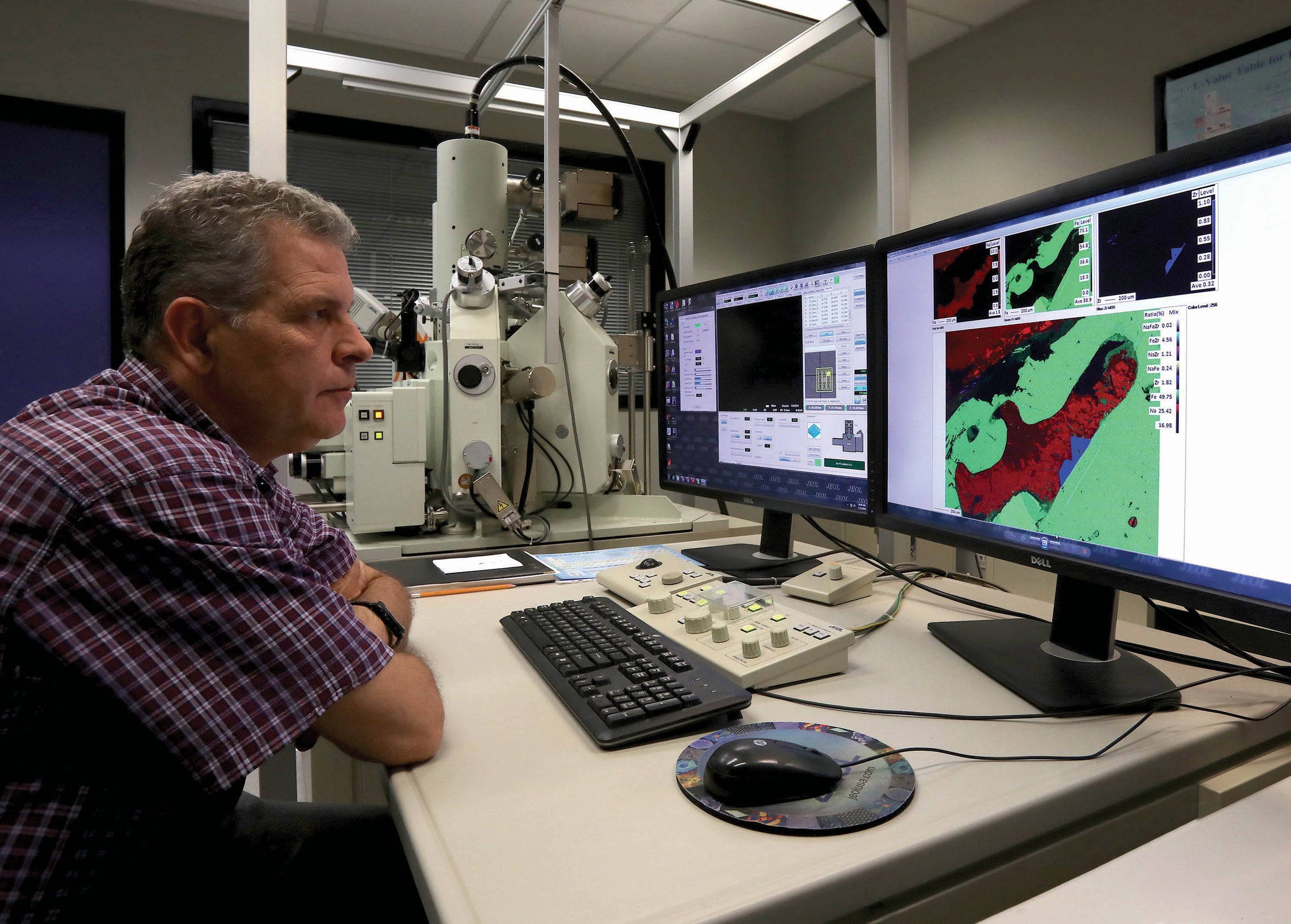 Field Emission Electron Probe Micro-Analyzer
Field Emission Electron Probe Micro-Analyzer
Gelu Costin, Rajdeep Dasgupta, Cin-Ty Lee
A JEOL JXA-8530F Hyperprobe was installed in September 2015 for non-destructive quantitative elemental analysis of materials at the sub-micron scale. The Hyperprobe consists of a field emission gun (Schottky Field Emission Source), an integrated energy dispersive detector (EDS), five wavelength dispersive spectrometers (WDS), a secondary electron detector, a backscattered electron detector for compositional and topographical imaging and an integrated cathodoluminescence (CL) detector. The probe lab is also equipped with a JEOL vacuum evaporator for the carbon coating of samples. The EPMA instrument can also be operated remotely.
Information about EPMA operations and scheduling can be found HERE.
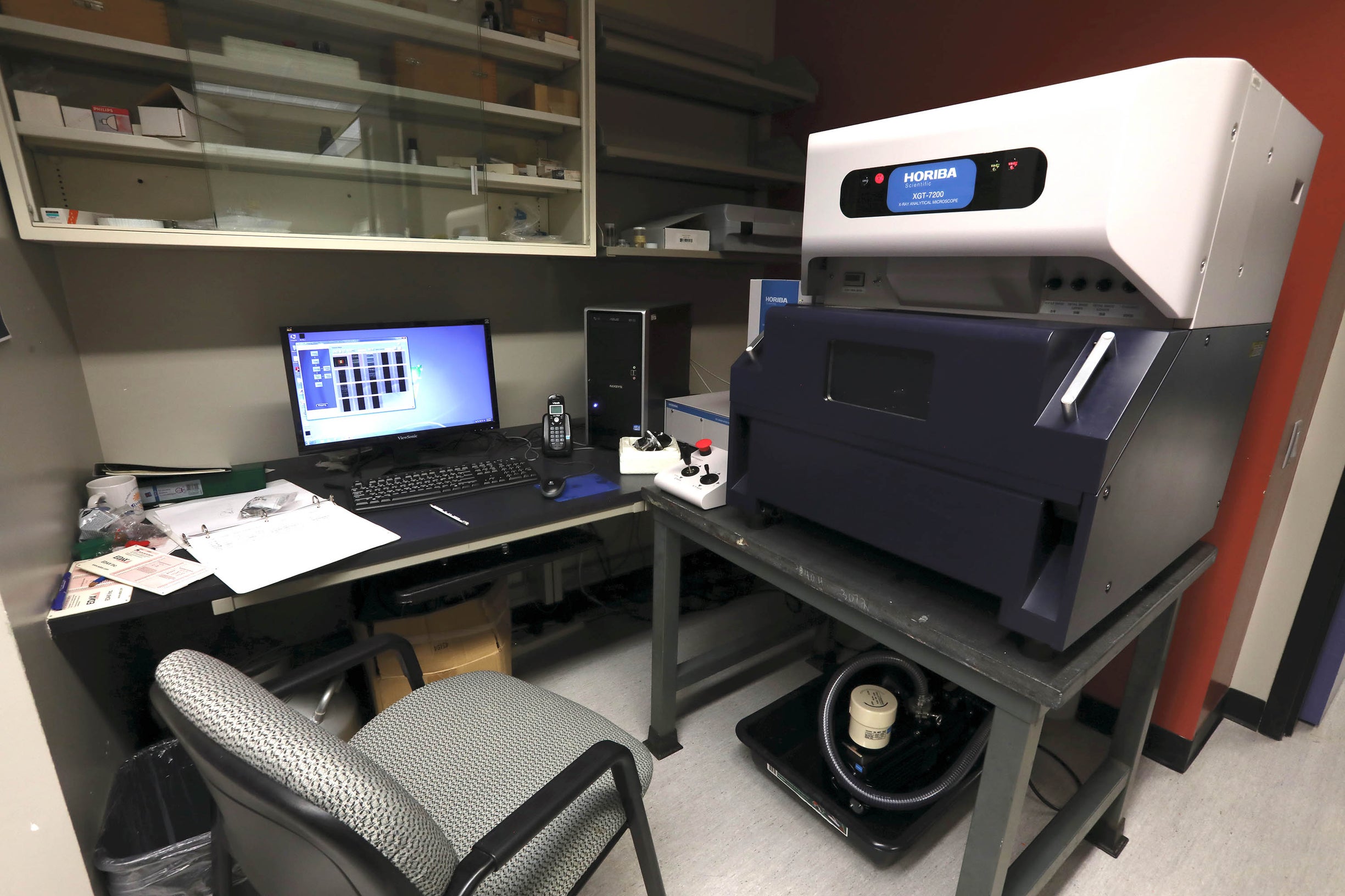 Micro-XRF
Micro-XRF
In early 2015, we installed a micro-XRF element mapper (Horiba XGT 7000) in our lab. This instrument excites atoms using a Rhodium x-ray source and measures energy of the re-emitted x-rays using energy dispersive spectrometry. This instrument consists of two monocapillary tubes capable of 50 micron and 400 micron spot sizes. We can operate under high vacuum and partial vacuum, the latter allowing us to measure volatile-bearing samples (such as wet sediments) as well fine sample powder mixtures. This instrument is semi-quantitative and is designed for rapid mapping of large samples (up to 10 x 10 cm) with minimal sample preparation.
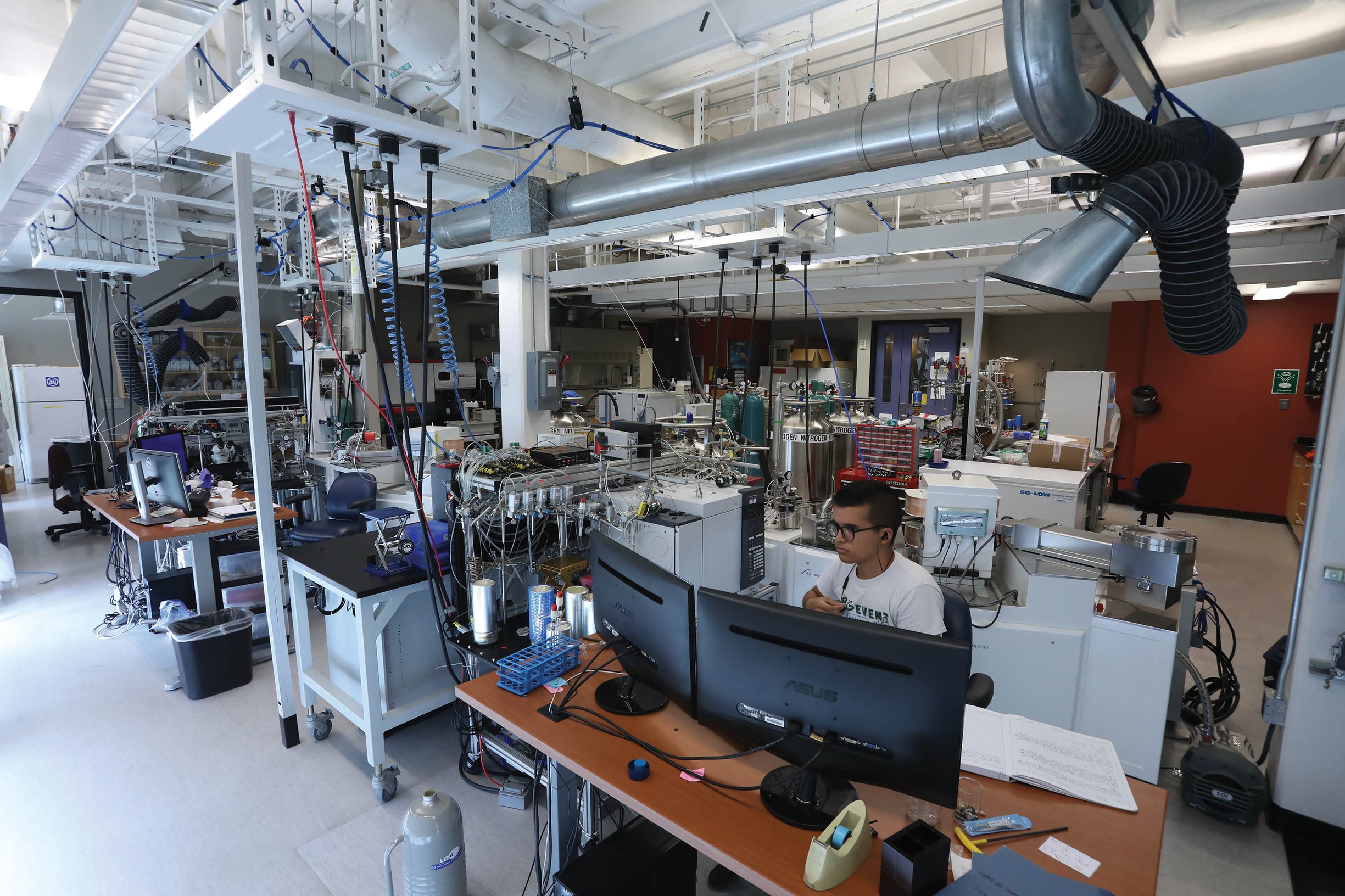 Stable Isotope Lab
Stable Isotope Lab
Built upon principles of flexibility, the 1250-sq. ft. stable isotope laboratory has two Nu Instruments Perspective IS isotope ratio mass spectrometers and a Thermo Scientific Delta V Plus isotope ratio mass spectrometer (owned by Cin-Ty Lee). In high-resolution mode, the Perspective instruments are capable of performing clumped-isotope analyses of O2 and CO2. They are currently set up to run automated clumped-isotope measurements of O2 in air, O2 dissolved in seawater, and O2 trapped in ice cores. All three IRMS instruments can perform continuous-flow analyses of C, H, O, and N isotopes in a variety of natural materials. We have also set up a semi-automated laser-fluorination + purification line to measure oxygen isotopes (16O, 17O, and 18O) in minerals with high precision, and a high-vacuum sample-handling line for offline sample preparation.
Click here for information about fee-for-service analyses on our isotope-ratio mass spectrometers.
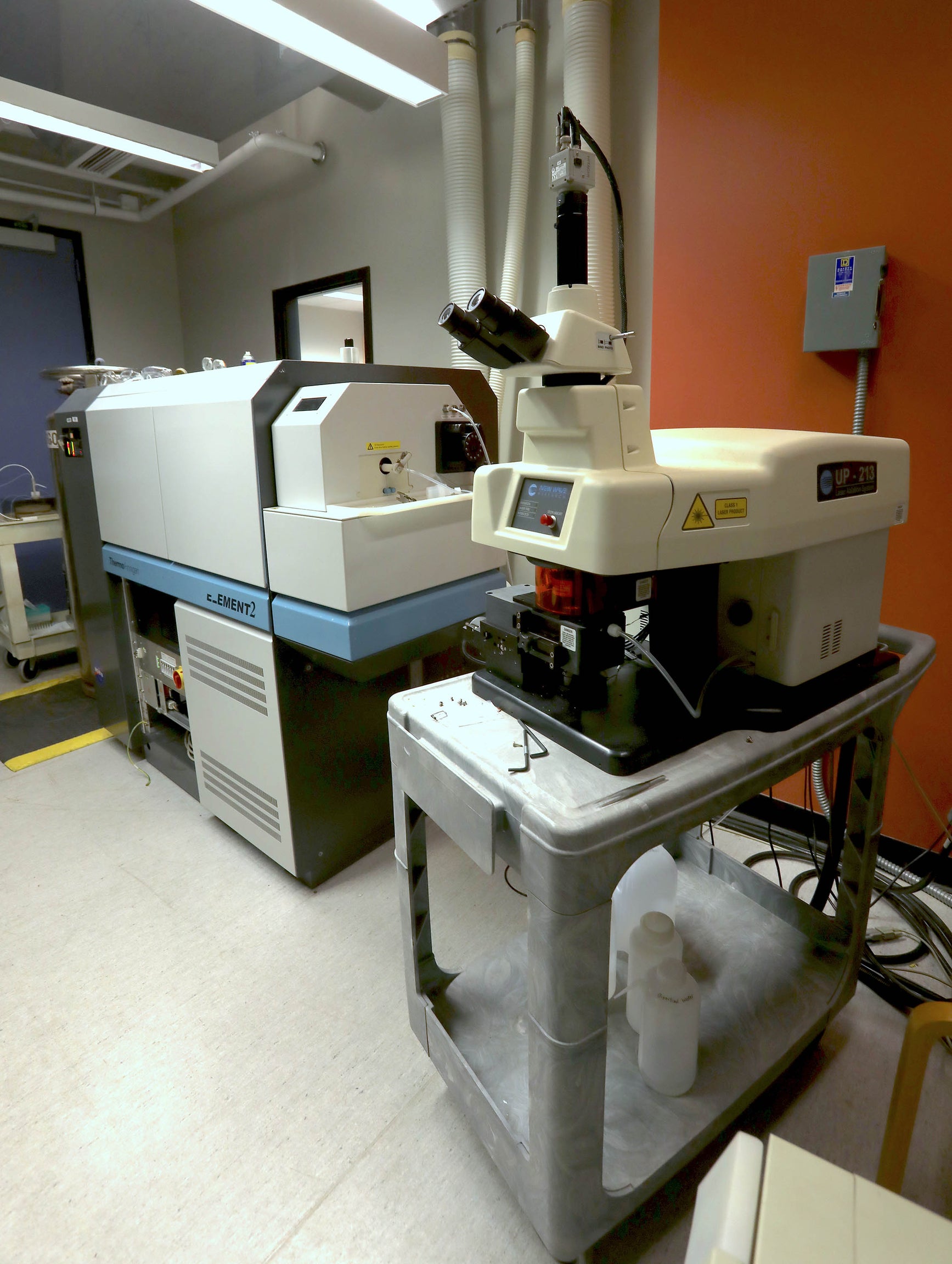 Inductively coupled plasma mass spectrometry (ICP-MS) and laser ablation facility
Inductively coupled plasma mass spectrometry (ICP-MS) and laser ablation facility
A Thermo-Finnigan Element 2 single collector, magnetic sector with a 213 nm New Wave laser ablation facility was installed in 2003. Capabilities include measurement of major and trace elements in solution as well as in solids via laser ablation. Our set up allows for both rapid scanning across the periodic table as well as variable mass resolution capabilities (300, 3000, and 10,000). Detection limits in solution mode are in the sub-ppt range and in laser mode are in the 10s of ppb range depending on various operating conditions. In addition to standard major and trace element analyses, we are capable of measuring S concentrations by solution and by laser ablation. We have also developed methods for in situ U-Pb geochronology.
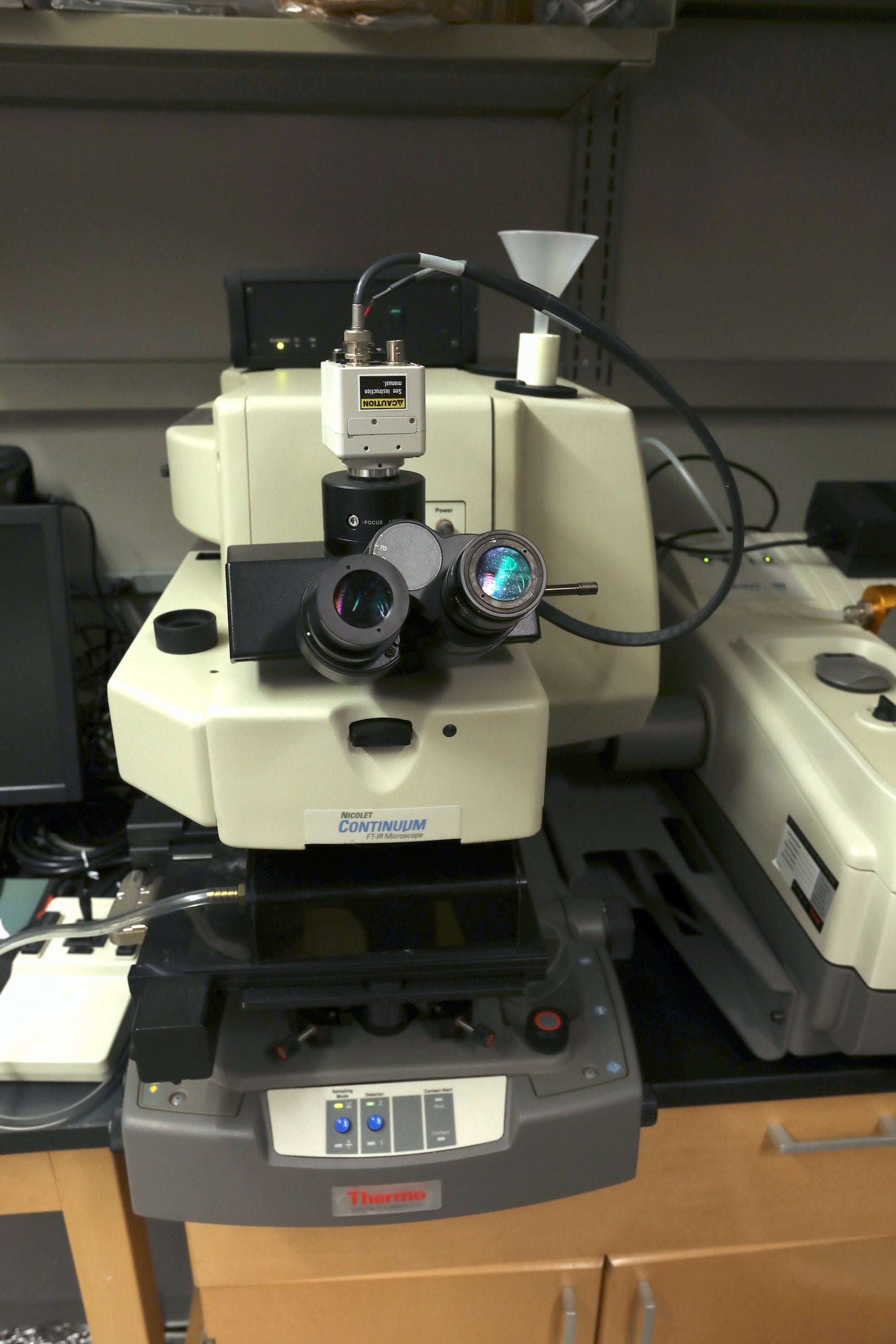 Fourier Transform Infrared Microscope (FT-IR)
Fourier Transform Infrared Microscope (FT-IR)
Thermo Nicolet FT-IR microscope installed in 2007, capable of transmitted and reflected absorbance down to spatial resolutions of 10 microns. We primarily use this instrument to measure OH and CO bonds in various silicate minerals or glasses. This instrument was acquired with funds from the Packard Foundation.
